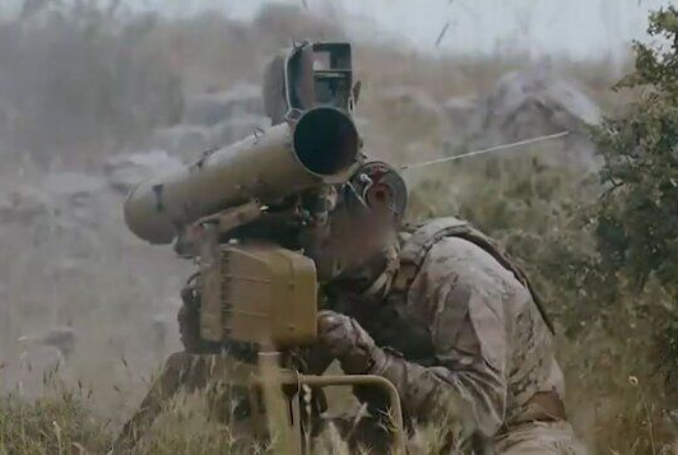
On the 40th day anniversary of the assassination of the late Hezbollah’s Secretary-General Hassan Nasrallah, on Wednesday, the group’s operations room issued a detailed statement announcing the withdrawal of the Israeli occupation forces beyond the border.
The Resistance Operations Room reiterated Hezbollah’s unwavering commitment to confronting the Israeli aggression on Lebanon, emphasizing that its resistance fighters would continue to cause substantial losses to the Israeli army and its military apparatus.
The statement assured that “this resolve” does not only apply to Lebanon but to the occupied Palestinian territories as well.
Ground Operations
The Resistance Operations Room statement outlines the ground operations on the frontline with special emphasis on the so-called Khaybar operations.
The group stated that starting on October 8, Israeli forces mobilized a significant number of soldiers and vehicles to advance toward the Lebanese city of Khiam with heavy aerial surveillance and cover in the area.
In response, the Lebanese resistance fighters established a fire defense plan that involved missile and artillery strikes, according to the statement.
The Lebanese news network Al-Mayadeen noted that “the plan involved a high volume of simultaneous, precise attacks targeting the enemy’s movements, positions, and advance routes, both within Lebanese territory and across the occupied territories”.
‘We Cannot Be Defeated’ – Hezbollah Leader Says Israel Will Not Achieve its Goals
The Resistance Operations Room announced that over the course of three days, the resistance fighters conducted over 70 targeted operations, “with 50 concentrated on the southern and eastern outskirts” of Khiam.
As a result, four Israeli tanks were destroyed by guided missiles causing important Israeli casualties between dead and injured, the statement noted.
Moreover, the operations room revealed that a guided missile hit an Israeli military position in the settlement of Metulla, claiming the lives of an unidentified number of Israeli soldiers and the injury of others.
In the Tel Al-Nahas area, the resistance fighters reportedly targeted a security unit in the area with a missile strike. This was documented by the media unit and was later released in footage revealing the aftermath damage and injuries in the ranks of Israeli soldiers.
The Resistance Operations Room noted that the most significant of their operations “was the precision missile strikes on large gatherings of enemy soldiers and vehicles in the Wadi Al-Asafir area,” southeast of Khiam.
“These strikes utilized advanced, high-accuracy missiles, each equipped with a 250 kg warhead filled with highly explosive material. The massive explosions and heavy casualties sparked widespread panic and chaos within the enemy ranks,” the statement read, as quoted by Al-Mayadeen.
The operations room further said that in addition to the “rocket salvos and strikes targeting enemy movements within Lebanese territory,” this operation incorporated as well “a series of precise and deliberate attacks on the rear areas of the forces involved in the aggression on Lebanon.”
It added that these targets were identified and then hit in a coordinated manner by targeting Israeli gathering points carrying out attacks on Al-Khiam and positions at Metulla site and surrounding settlements, “with 11 concentrated rocket salvos and artillery shells, resulting in confirmed direct hits”.
The statement confirmed that “a total of 23 missile salvos were launched, targeting key enemy positions, including a training camp, firebases, and command centers in the ‘Ayelet Hashahar’ settlement; missile launch sites in ‘Yesud Hama’ala’; an armored assembly area in ‘Sha’al’; and command headquarters in ‘Shamir’.”
Three days after advancing into Khiam, the Israeli occupation forces were reportedly forced to retreat behind the border on October 31. Israeli helicopters were mobilized to evacuate the dead and injured and military vehicles towed away damaged Israeli tanks, the statement revealed.
‘Complete Lie’ – Hezbollah Debunks Israeli Claims on Missile Power
Israeli Losses and Withdrawal
The resistance movement also disclosed that during an Israeli attempt to advance in Houla on November 2, the resistance fighters confronted the Israeli military bulldozers-tasked to clear the path to reach the town’s center, with two Kornet anti-tank missiles, destroying them and causing “significant casualties among those inside” between dead and injured.
According to the statement, this resulted in the withdrawal of the over 40 Israeli military vehicles to the eastern border of the town, and once assembled the resistance struck them with over 60 rockets, resulting in significant losses in military personnel and equipment.
The Resistance Operations Room confirmed that thanks to the “relentless and sustained resistance strikes, coupled with the failure of the occupation forces to establish a foothold within the border villages,” the Israeli occupation army was forced to withdraw from several towns and retreat beyond the border.
According to Hezbollah, the withdrawal was accompanied by “extensive military operations, including the systematic clearing of border sites, artillery positions, and air raids by warplanes targeting towns like Aita al-Shaab, Ramya, Mays al-Jabal, Blida, al-Khiam, and others.”
The resistance movement stated that repeated attempts to besiege the western part of the town of Naqoura have also failed, as well as an “infiltration attempt in the Wazzani area in the eastern sector.”
Hezbollah’s New Leader Made First Speech Today – This is What He Said
The Khaybar Series
According to Hezbollah, since its inception on October 1, the Khaybar operations series succeeded in striking 56 targets, 18 of which were carried out last week.
The resistance group announced that it intensified the “pace of its high-impact operations” within the Khaybar series regardless of the Israeli ongoing surveillance and activity.
Hezbollah also noted that these operations targeted “Israeli strategic and security centers, facilities, and military bases, reaching up to 145 km deep inside occupied Palestine.”
The resistance further confirmed that these significant operations disrupted the lives of Israelis on the psychological and logistical levels.
“Over two million settlers spread across more than 5,000 km² of territory and, at a depth of 145 km inside occupied Palestine, were forced into shelters with each strike. Daily life was repeatedly disrupted, with schools, workplaces, and air traffic suspended, intensifying the chaos in the occupied areas,” the statement said.
Israel’s Only Achievement
Hezbollah warned settlers against returning to their settlements as they have been “designated military targets.”
“The settlements contain key military infrastructure, including command headquarters, barracks, military factories, artillery positions, missile bases, and logistical and staff service stations supporting the forces attacking Lebanese territory,” the statement said.
The resistance group stated that Israel’s only achievement during its “ground maneuver” was the destruction of civilians’ homes and infrastructure and the bulldozing of agricultural lands in Lebanese border towns.
Hezbollah also said that recent weeks have shown that “resistance formations have effectively organized their structures across multiple levels, as reflected in the increasing frequency of rocket and drone strikes on various targets in Israel.”
According to the statement, the resilience of the resistance fighters and their precise strikes succeeded in deterring the Israeli army’s incursions and stopping the invading forces at the borders of the villages along the front edge.
“They have successfully blocked any attempt to advance toward the second-line villages or to approach the course of the Litani River,” the statement concluded.
(Al-Mayadeen, PC)
